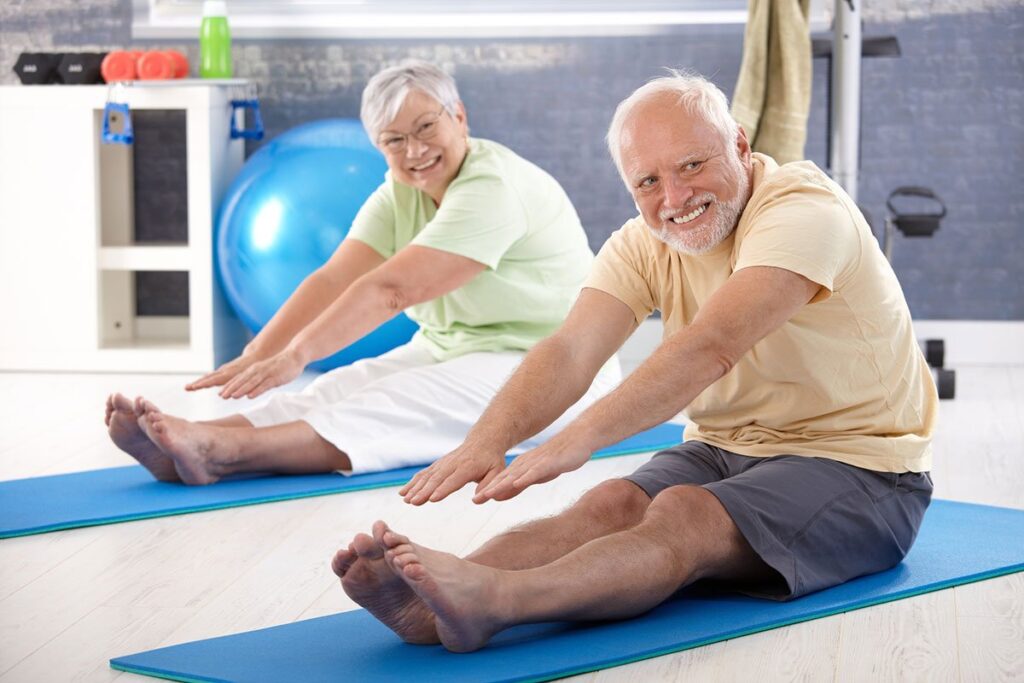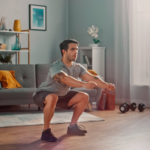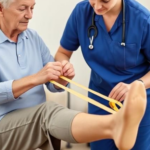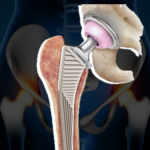
10 Best Knee Strengthening Exercises for Seniors
Joint and knee pain is one of the most typical illnesses that people experience as they age. Keep your knees healthy and mobile because they assist your daily physical activities.
The ability of the knees and legs to move freely is necessary for performing simple actions like walking, sitting, and supporting smaller bodily movements. The knees may be subjected to more force than necessary depending on each person’s lifestyle.
Knowing the best knee-related exercises and positions can help prevent and occasionally even improve knee joint health. The body experiences increasing deterioration as we become older. Since the knees are what hold the body upright, they are vulnerable to discomfort and weakness in older people.
Knee Problems Among Seniors
Around the world, a lot of seniors struggle with knee problems. The most frequent knee conditions seen in the medical community are:
- Tendonitis: Knee inflammation and swelling brought on by overuse or inappropriate knee use. Most frequently, it affects those with a history of sports activity.
- Osteoarthritis: Over time, the cartilage in the bones and joints deteriorates. Osteoarthritis results in stiffness, discomfort, and weakness, and can aggravate existing injuries.
- Sprains: Sprains are more likely to occur in weaker joints or muscles. Because the body is straining harder to support its weight despite the steady decline, knee sprains are frequently seen as people age.
There are preventative measures that almost anyone can do to support their knees as they age, even if we can’t always control what the body does.
Preventative Tips For Knee Strengthening Exercises
Maintain a Healthy Weight
Someone’s knees are strained with each step they take. Tendons, ligaments, and muscles must perform particular movements in order to walk. Each step, stumble, or jolt is cushioned by the meniscus, a piece of cartilage in the knee.
Extra body weight can put a strain on the body as a whole, including the knees. One of the main factors contributing to bodily harm and health deterioration is being overweight. One of the greatest methods to shield senior citizens from knee problems is to lose weight or maintain a healthy weight, according to the Harvard University Department of Health.
Have a Regular Workout Routine
It’s not about how much you can endure when exercising. It involves being consistent and thoughtful about your health. By including knee exercises in your regular workouts, you may help your knees age gracefully and avoid injury and early deterioration.
The secret to total health is healthy behaviors! Like washing or brushing your teeth, make it a regular occurrence. Aim for 3-5 times of exercise per week.
Avoid Injury
It’s crucial to understand what perfect form feels like and looks like when performing any physical exercise regimen. There are proper and improper ways to carry out each movement throughout an exercise.
Your body might be harmed by stretching or strengthening exercises that are performed incorrectly. Make sure you have a mentor who can show you the right form before beginning new or more difficult workouts to prevent injury.
Flexibility and stretching
Strength is vital when it comes to the knees. However, maintaining balance, flexibility, and letting go of the tightness around the knees are equally crucial. Any strength-related objectives you have should be accompanied by some simple balance and stretching exercises.
You don’t want to overstretch your body to the point where it becomes immobile even while you concentrate on strengthening.
Why Exercise the Knees?
To maintain good bodily and mental processes at any stage of life, physical activity is necessary. Here are some of the most useful exercises for the knees if you need help getting your legs in better form.
10 Knee Strengthening Exercises for Seniors
Calf Raises
Exercises for the calves and back legs strengthen the supporting muscles, relieving pressure on the knees while standing and walking.
You can perform these exercises by simply standing on your tiptoes and then gradually dropping your heels to the floor. Or you may follow these instructions to take on a greater challenge:
- To begin, place your feet on a step, exercise stool, or curb. To maintain your equilibrium, make sure you have something to grip onto. Allow your heels to hang just a little bit over the edge of the surface.
- Stand up straight on your toes, letting your heels lift. Your calves will flex as a result.
- Return to the ground slowly, allowing your heels to touch the ground a tiny bit less than you are currently standing on. There will be a slight calf stretch.
- Perform 10 reps of calf lifts for up to 3 sets.
- Knee Extensions
Extensions are accessible to beginners. You could also make them more complex. They aid in building up the quadriceps muscles, which control actions involving the knee.
- Place your feet firmly on the ground while sitting upright on a chair.
- While continuing to sit, lift your right leg off the ground and extend it out in front of you.
- Your quadriceps and thigh muscles will be active. Lower back to the floor after holding for a count.
- Alternate and lift your left leg. Return to the starting position while holding.
- Repeat for a total of three sets of 10 counts on each leg.
- Standing Knee Flexion
Hamstring muscles can be strengthened using knee flexions. These simple workouts can aid with improving gait, lower body strength, and balance.
- To start, stand with a chair or bar in front of you for support.
- Raise your right foot off the floor and bend it as far back behind you as you can, as if you were attempting to stand on one foot.
- Return your leg to its original position by straightening it. Ten times in total.
- Perform the exercise 10 times on the left leg.
- Complete three sets on each leg.
- Leg Raises
Straight leg raises are an excellent starter option to try if you’re looking for a knee exercise that won’t tax your leg muscles. The hamstrings and quadriceps, which assist the knee’s mobility, become stronger with this straightforward exercise.
- On the floor, lay on your back with your legs straight.
- With one leg extended and the foot flat on the floor, point it up toward the ceiling toward your butt. This will serve as your auxiliary leg.
- While keeping your other leg extended, lift it as high as you can to line up with the knee that is supporting your opposing leg. Your muscles will be engaged when you lift them.
- Retract your straight leg to the ground. Ten times in total.
- Wall Squats
Here is an intermediate move to try if you feel secure in your balance. Wall squats put a strain on your upper legs’ muscle strength as well as your glutes and knees.
To increase and keep up your general lower body strength, do this workout. Stop doing this exercise and attempt a new one if it hurts your joints.
- Place your back against a wall while standing up straight with your arms at your sides.
- Slowly lower yourself to the ground by bending your knees while keeping your back against the wall. Keep your feet shoulder-width apart with your knees straight. Ensure that your pelvis and back are in balance.
- Continue to contract for three to ten seconds. A minor muscle burn will occur.
- Slide yourself back up to a standing posture while maintaining your back against the wall.
- Depending on your level of fitness, repeat 10 times with up to 3 sets per day.
- Step-Ups
Step-ups are a classic exercise that strengthens the legs while improving balance and cardio. The modification for this workout is as simple as stepping up onto a higher platform.
- Place a low curb, step, or exercise stool in front of you while standing upright. Use a chair to help you balance if necessary, or ask a caregiver to help you stay in place.
- Place your right leg on the step first, then your left.
- Take a right, then a left, and step back down.
- Continue for 10–12 repetitions, up to 3 sets. Start with the opposite leg on each of the other sets.
- Side Steps
Side steps are simple to use and support mobility and balance. These may essentially be performed at any place without any specialized tools.
- Place your feet hip-width apart while maintaining a neutral stance.
- Spread your legs apart by taking a step to the side with your right leg.
- Next, tuck your left leg in front of your right.
- Reverse the motion by bringing your right leg back in after taking a step to the side with your left foot.
- Continue 10–12 times, up to 3 sets.
Use some ankle weights when executing side steps for a more cardiovascular workout.
- Resistance Band Squat Steps
The resistance band side squat is comparable to the above-mentioned side steps as it progresses to more intermediate motions. With the resistance band helping to increase mobility and knee stability, squats will demand greater balance and lower leg strength. It’s better to carry out this activity under the guidance of a fitness professional.
- A resistance band should be placed below your knees. Place your feet hip-width apart as you stand.
- Slightly stoop down by bending your knees.
- While keeping your knees bent, extend your right leg. Your knees, outside legs, and glutes will all feel active.
- Keeping your body level, bring your left leg over to sit close to your right.
- Take as many steps—about 10—along the room as you can while repeating these side steps.
- Now turn it around. Step your left leg out while in a semi-squat and then bring your right leg in to match. Side-stepping roughly ten times, repeat until you return to your starting point.
- After the entire set, relax. If desired, repeat up to three times.
- Clamshell (advanced)
A more difficult exercise that targets the glutes, hip flexors, inner and outer thighs, and knees is the clamshell. Ask your doctor before doing this exercise if you have shoulder or neck issues, or buy a fitness manual to coach you through it.
- Lie on your side with one leg stacked over the other and your legs at a 45-degree angle. The arm you are lying on should support your head. To provide additional support, feel free to bend your arm under your head or lay it on the floor with your arm up along your head.
- To sustain your equilibrium, contract your core. Lift your right knee as far as you can toward the ceiling while keeping your right foot firmly planted on your left. Your hip will open slightly, and you’ll feel your legs moving. Your leg looks like a “clamshell” when it extends.
- Bring your right knee back down to contact the other while keeping your hips and feet firmly planted.
- Carry out the workout 8–10 times more. then change to the opposite side.
- Perform up to three sets of each side.
- Leg press (advanced)
Try a leg press if you are already committed to a fitness regimen and are looking for a fresh challenge. Strength in the knees and legs is improved.
The added load on the knee makes this only suitable for older persons with a higher level of fitness. Before beginning any new, intense workout program, check with your doctor!
* A leg press machine is necessary for this exercise.
- Choose the machine’s preferred weight. Make sure the weight is appropriate. Not wanting to hurt yourself. Start with a lighter weight and gradually increase it.
- Place your back on the seat of the leg press machine for support. You should not be tight before starting this workout in order to avoid tension, so adjust the machine as necessary and take a seat comfortably.
- Lean against the metal plate in front of you with your feet flat. You will be in this starting position with bowed knees.
- Slowly extend your legs straight out in front of you to push the plate out. Breathe. Return to the starting position carefully.
- Repetition: 5–10 times, while breathing. Stop the workout right now because it’s probably too much if any portion of your body experiences an acute ache.
How To Protect Your Knees During Exercise
Ask your doctor: Consult your doctor or a fitness professional for approval before beginning a new exercise program to strengthen your knees. Not all of the aforementioned workouts are appropriate for everyone. You can reduce your risk of suffering a knee injury by getting workout advice from a specialist who is familiar with your medical history.
Always warm up first: don’t jump directly into challenging exercises. Be careful to warm up by doing some stretching, mild pacing about the room, or walking. To get ready for exercise, you need to loosen up your body.
Be consistent: It’s acceptable, to begin with, smaller workouts and progress to larger, more difficult ones. You’ll probably experience the advantages over time if you follow through with your plan and exercise frequently.
Start slowly when working out: You have to start somewhere when pursuing exercises for your knees. Expecting to have to run or perform too-difficult leg presses is unrealistic. Start with side steps, step-ups, calf lifts, and leg flexions. Until you are ready to move on to more demanding activities, these will provide you with a respectable workout. Keep track of your development and cherish the skills you already possess.
Pay attention to your body: That particular exercise is probably not the greatest for you right now if you experience any pain, popping, excessive tightness, or discomfort. Until you find a solution to whatever is limiting your mobility, try doing something easier on the body, or seek professional help.
Look for low-impact exercise: In addition to strengthening, your body will benefit from daily low-impact exercise. Stretching, mild yoga, swimming, and walking are all excellent exercises for maintaining flexibility and health as you age. Additionally, mobility improves brain function and mood stabilization, so make an effort to walk for your general well-being.
Benefits of Knee Exercises Over Time
Over time, you should expect to notice benefits if you consistently perform the proper exercises for strengthening your knees with good form. Pay attention to your body, stretch frequently, and get moving! Remember that a body with good habits is more robust.
Make exercise enjoyable and ask a professional for guidance that is appropriate for you and any conditions you may have. You’ll be able to handle every situation in life for many years to come if you have stronger knees.




